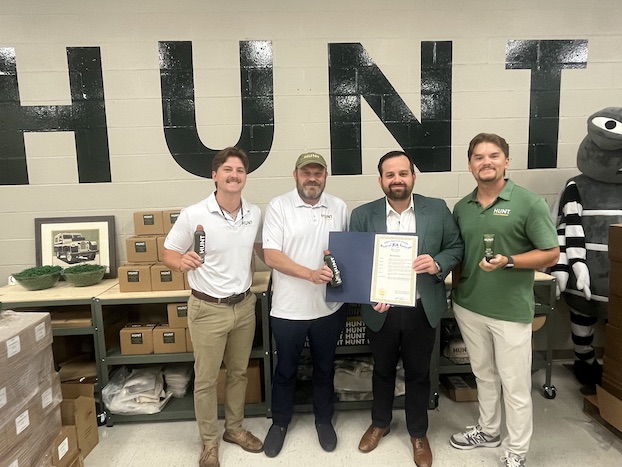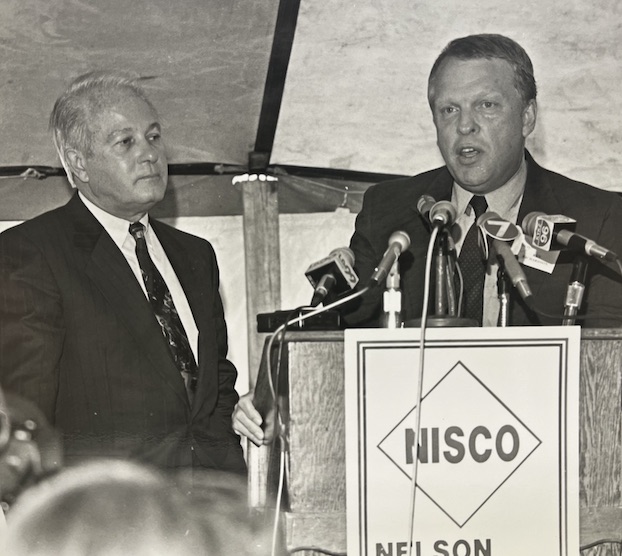Special.2005.Rita
Published 6:00 am Friday, February 28, 2020
OCT. 5, 2005
JOHNSON BAYOU — James and Wynette Erbelding returned to this tiny community in southwestern Cameron Parish on Tuesday and found their home still standing.
That’s where the good news ended.
Trending
The house, part of which the family says dates back to the 1800s and once served as the post office for Johnson Bayou, was swamped by Hurricane Rita’s storm surge. Thick black mud mixed with grass covered the entire floor and ran halfway up the walls. Mold was already thriving.
Next door, the Erbelding’s trailer park, where the federal government once planned to house Hurricane Katrina evacuees, was gone. Most of the dozen trailers were piled up like firewood in the corner of the property, completely ruined. Of the family’s 150 head of cattle that once roamed a nearby pasture, 14 had been found.
In Cameron, homes were wiped from their foundations and the pungent stench of mud and oil still lingers in the air and Hurricane Rita’s wrath is unmistakable.
The truly strange and tragic sights start south of devastated Hackberry on La. 27. Clumps of marsh weeds hang from 20-foot high power lines. Orange life jackets dangle from the tops of trees. Telephone poles float in tidal pools. Massive petroleum tanks sit awkwardly along the highway, unwanted deliveries made by a massive storm surge.
The debris gets larger and the damage becomes more shocking as the highway cuts southbound through the marsh and runs into ground zero, Holly Beach, where only the water tower remains.
The once-vibrant little community of a few dozen small beach houses, camps and stores was wiped off the face of the earth by Rita. The town has been reduced to what looks and feels like a barren desert of sand dunes and pooling water, topped by acres and acres of shattered debris.
Trending
Tuesday morning, Holly Beach was lifeless and silent.
The only sound was the gulf breeze and the occasional emergency worker or oilfield contractor who passed by slowly to snap a few photos of the obliterated landscape. Ordinary sightseers weren’t allowed in the parish and most locals had come and gone earlier in the week, or not come at all.
Not one landmark — the church, the grocery store or any home — was recognizable.
Every last structure seemed to have exploded into unrecognizable fragments that were sprinkled along the beach and highway into the marsh.
Only smaller items, shattered toilets and twisted bed frames, were discernible. A lawnmower was buried in two feet of sand where a garage may have once stood, a utility meter was barely visible through the ground.
A pair of brown loafers were stacked by the highway next to a fragment of a decorative plate. A lawn trimmer was perched atop the remains of a tree.
A statue of Jesus stood next to a sign from the Holy Trinity Catholic Church, perhaps righted by a returning resident. The church was gone.
The beach has reclaimed the town almost to the highway, overtaking the two residential streets that once ran between the highway and the gulf. Pools of water nearly reached the highway. A few inches of road stripes peeked through the sand and mud.
Cars were scattered about like toys, windows smashed and interiors full of debris. A blue Buick was overturned on the newly formed beach.
From Holly Beach, a westward turn onto La. 82 leads one past the series of small beach communities — Little Florida Beach, Constance Beach, all devastated — eventually reaching the slightly inland community of Johnson Bayou 12 miles to the west.
The highway, built on a protective chenier that serves as the only barrier between the gulf and the marsh, is crumbling. Dead alligators, killed during the storm and sucked back towards the sea by the receding waters, bake along the highway and on the beach.
The breakwaters erected between Holly Beach and Constance Beach remain, but the beach, recently replenished by a multimillion-dollar sand pumping project, is badly eroded.
Back in Johnson Bayou, Jake Lebleu, who lived in one of the homes in the Erbelding’s trailer park for five years, donned his rubber boots to help the Erbeldings tend to their home. His own future is unclear. He’s waiting to hear from FEMA.
“The little trailer I was in was demolished,” he said. “What little belongings I had, they’re gone.”
James Erbelding, a truck driver and operator for a construction company, said Rita was worse than Hurricane Audrey, the 1957 storm that destroyed Cameron Parish. The water then, he said, didn’t reach their home.
“I think this was worse than people expected,” he said.
The Erbeldings vowed to repair their home if possible, and rebuild if they must. In the meantime, they’ll be looking for temporary housing in the Lake Charles area.
“We’re not leaving,” Wynette Erbelding said. “If they would let us now we’d probably pitch a tent and stay so I could protect what I have.”





